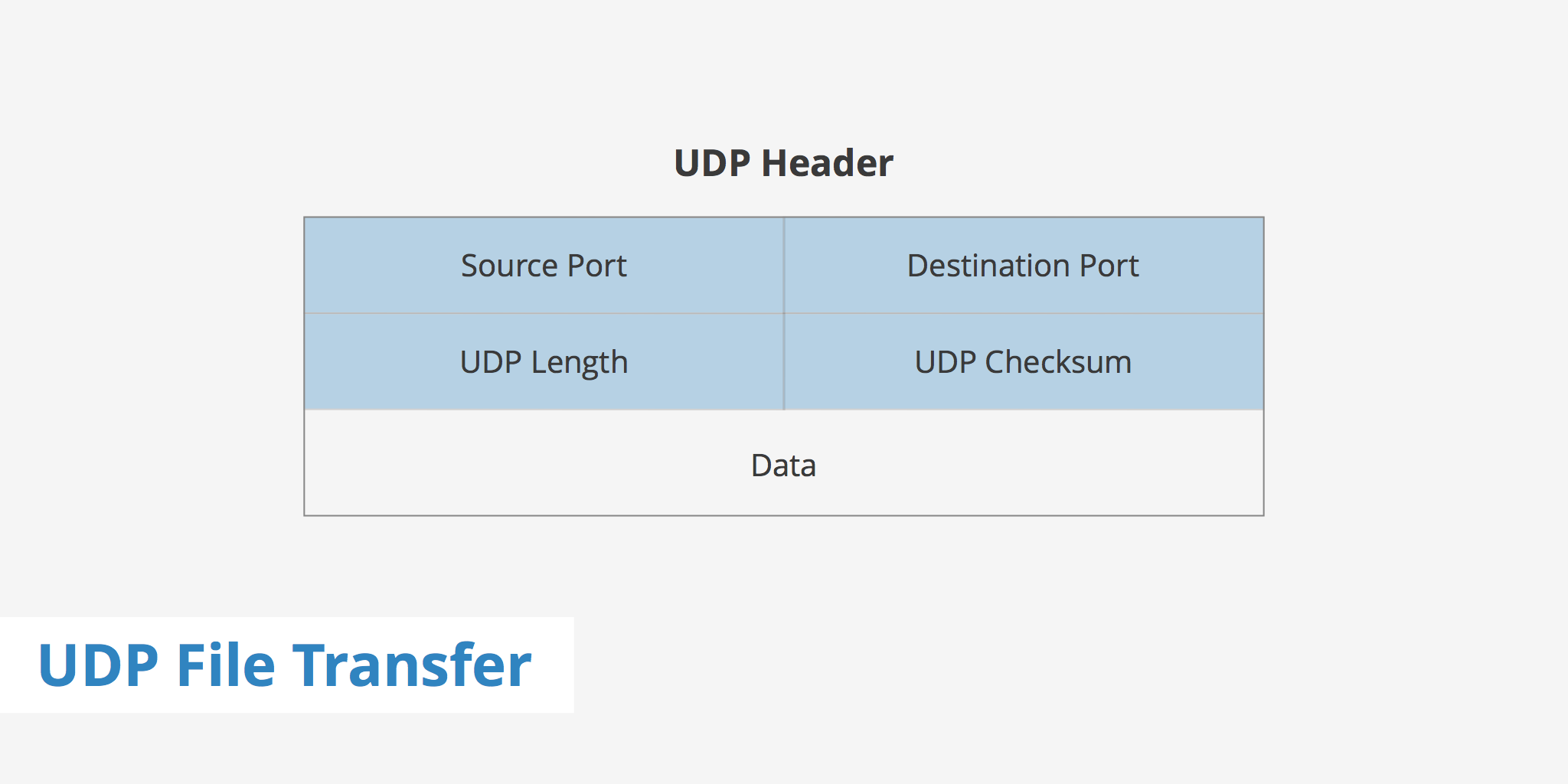UDP File Transfer - Explained

What is UDP?
UDP, which stands for User Datagram Protocol, is a method used to transfer large files across the Internet. TCP, or Transmission Control Protocol, is the more widely known and used protocol for file transmission, however, falls short in comparison when it comes to transferring large files at fast speeds. A few scenarios where UDP is commonly preferred over TCP include:
- Audio communication
- Video communication
- Peer-to-peer file sharing
The way TCP and UDP protocols both work are that they break down a large data set (i.e. a file) into individual packets. These packets are then sent across the Internet, hopping from one node to the next until they eventually end up at their destination. Once all of the packets have arrived, the data set is reconstructed and the file is back to its original state.
In this post, we'll go over some of the granular differences between UDP and TCP as well as a few UDP tools you can use.
UDP vs TCP
There are a few differences that exist between the way UDP and TCP work. These differences are important components in determining what each protocol is suitable for your use-case in terms of data transfer. A few distinctions between UDP vs TCP include:
| Protocol features | UDP | TCP |
|---|---|---|
| Reliability | Unreliable, there is no guarantee that all packets will be received | Very reliable, all data is acknowledged and tracks data transfer in order to ensure that all packets have been received |
| Connection | Connectionless, in that there is no dedicated connection required | Connection-oriented, in that it requires a dedicated connection before any data can be transferred |
| Acknowledgements | Not required, this allows for faster speeds | All data is acknowledged. This is required before another transfer can take place |
| Other Protocol uses | DNS, VoIP, DHCP | HTTP, HTTPS, FTP |
| Data Flow | No option for flow control | Provides flow control options including: sliding windows, congestion avoidance algorithms, etc |
| Transmission Speed | Very fast | Fast but not as fast as UDP |
| Overhead | Very small (header is 8 bytes) | Small but not as small as UDP (header is 20 bytes) |
In terms of reliability, UDP has its drawbacks when compared to TCP. You are essentially trading reliability for performance. However, in some cases such as audio communication, this is greatly preferred, Just think, if you were having an audio conversation with somebody online and all of the communication was slowed down because the packets were being transferred over TCP. Although you would never miss a word being spoken, the conversation would take considerably more time. On the other hand, having the same conversation over UDP, the conversation is transferred much faster although certain packets may be dropped.
UDP header
As mentioned in the table above, the UDP header is quite small (8 bytes in total) and consists of four fields, each one being 2 bytes in length. The purpose and function of each UDP header section is described below.
- Source port - Used to identify the application sending the message.
- Destination port - Used to identify the application receiving the message.
- Length - Used to identify the length of the header itself.
- Checksum - Used to verify that the data has not been corrupted by routers of bridges in the network.
UDP file transfer tools and projects
There are many UDP file transfer tools and projects that implement UDP for both usability purposes as well as performance reasons. Below are a list of projects that you can use within your own network to enable the transfer of files over UDP. The dependability of each project varies and it will require a certain amount of testing to verify which one works best for your use case. However, each UDP file transfer tool below is open source, therefore you can use it for free.
- QUIC, short for Quick UDP Internet Connections, is an experimental network protocol design by Google. The goal for QUIC is that it allows for an even faster Internet browsing experience and in time, will likely replace HTTP/2. Learn more about QUIC via this QUIC FAQ guide.
- UDT is an extension of the UDP transfer protocol. It is used to transfer bulk data at much higher speeds than TCP. UTD is also more configurable and allows you to set various congestion control algorithms.
- Tsunami blends together both TCP and UDP. It uses TCP control and UDP data transfer to allow for higher speeds.
- Packetsender is a utility for sending and receiving TCP and UDP packets. You can use this tool for a variety of purposes including test automation, malware analysis, quality assurance, etc. It also comes with a GUI to allow for an easy to use experience.
- UFTP is an encrypted UDP based FTP with multicast. It is used to deliver files securely, reliably, and efficiently to multiple servers at the same time.
If you're interested in learning more about UDP and making use of it, consider checking out the UDP file transfer tools above for more details.
Summary
UDP certainly provides attractive features when it comes to performance and speeding up the delivery of data sets across the Internet. Although it still has certain drawbacks that prevent it from being used in all applications, there have been great advancements in improving its stability and reliability. UDP is likely the protocol the Internet will move towards in order to deliver standard information (such as website data, videos, etc.) thus making for a great enhancement in terms of web performance.